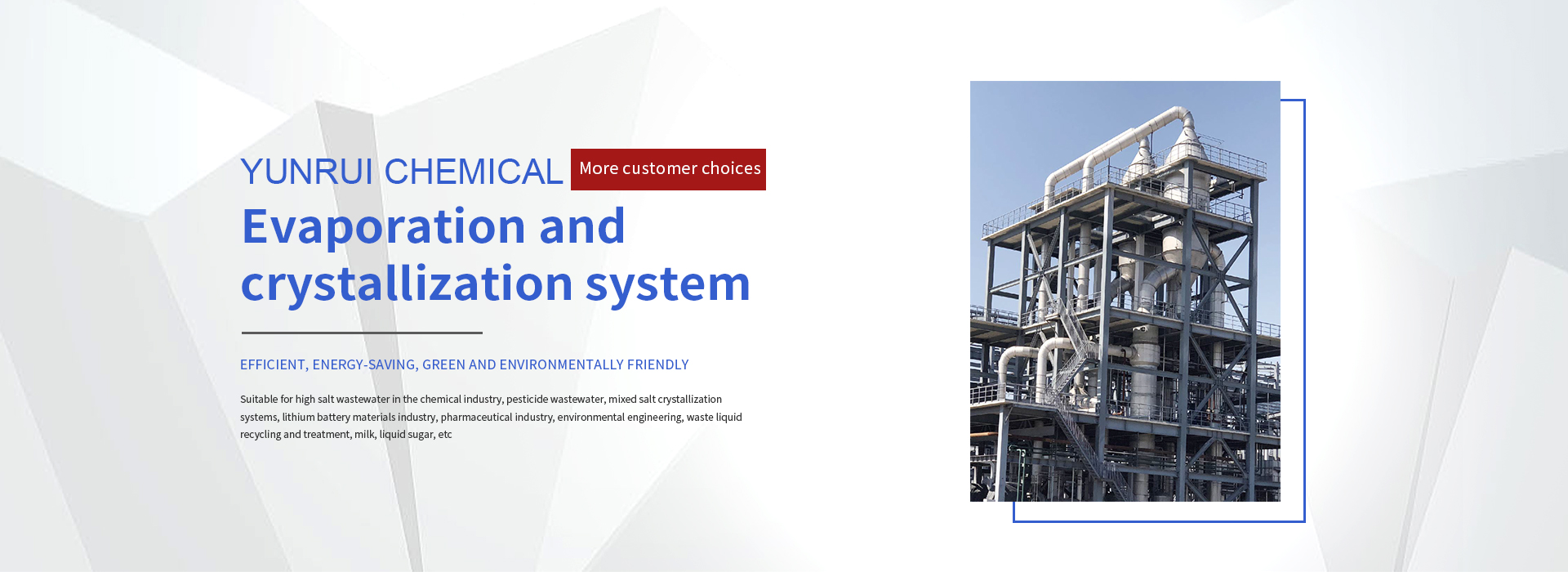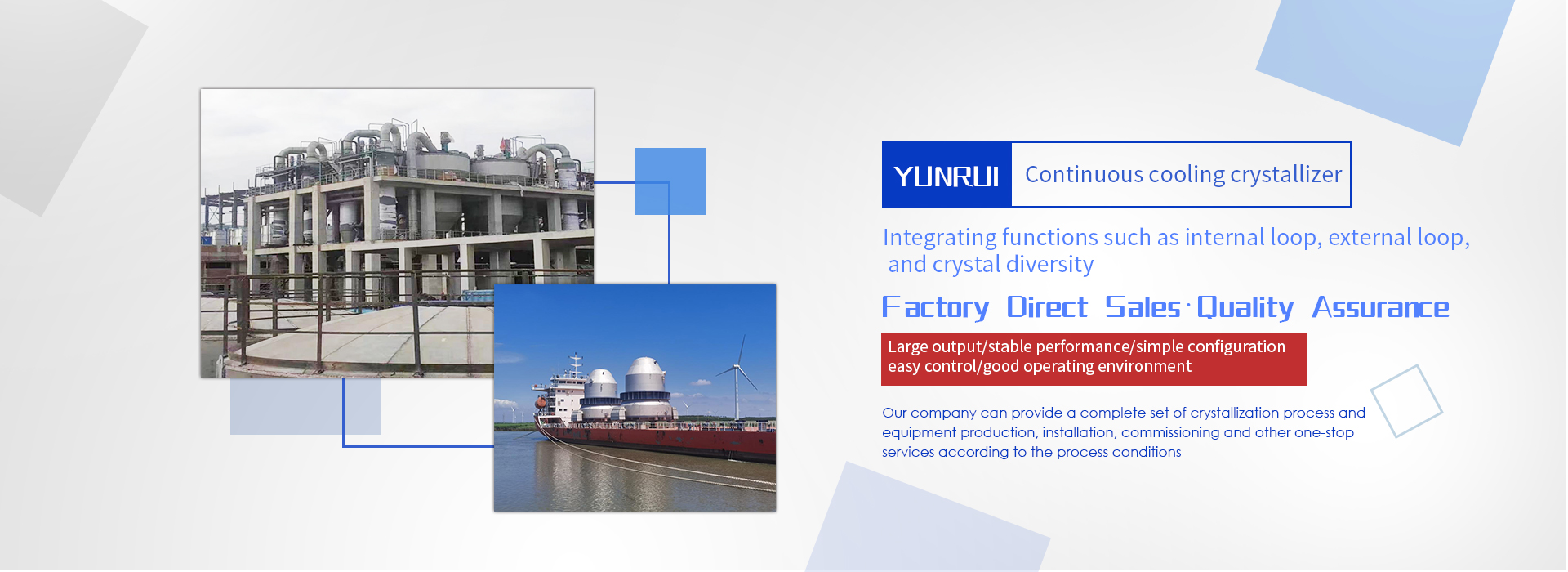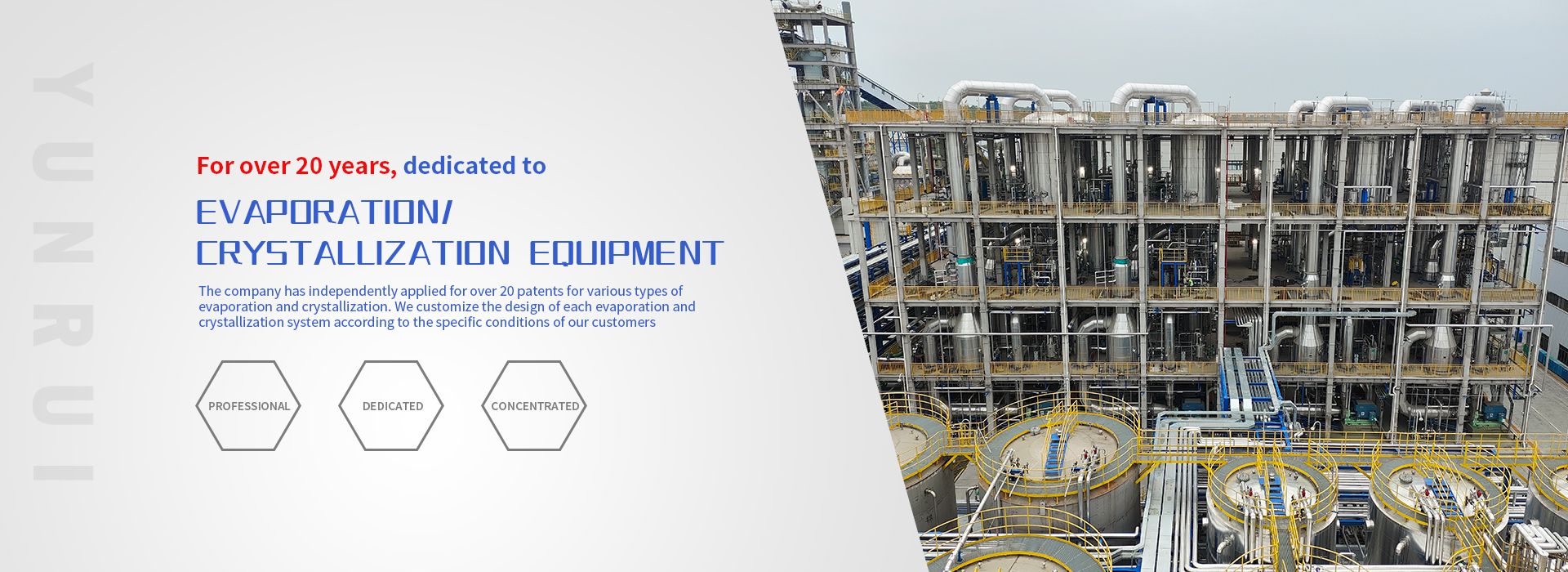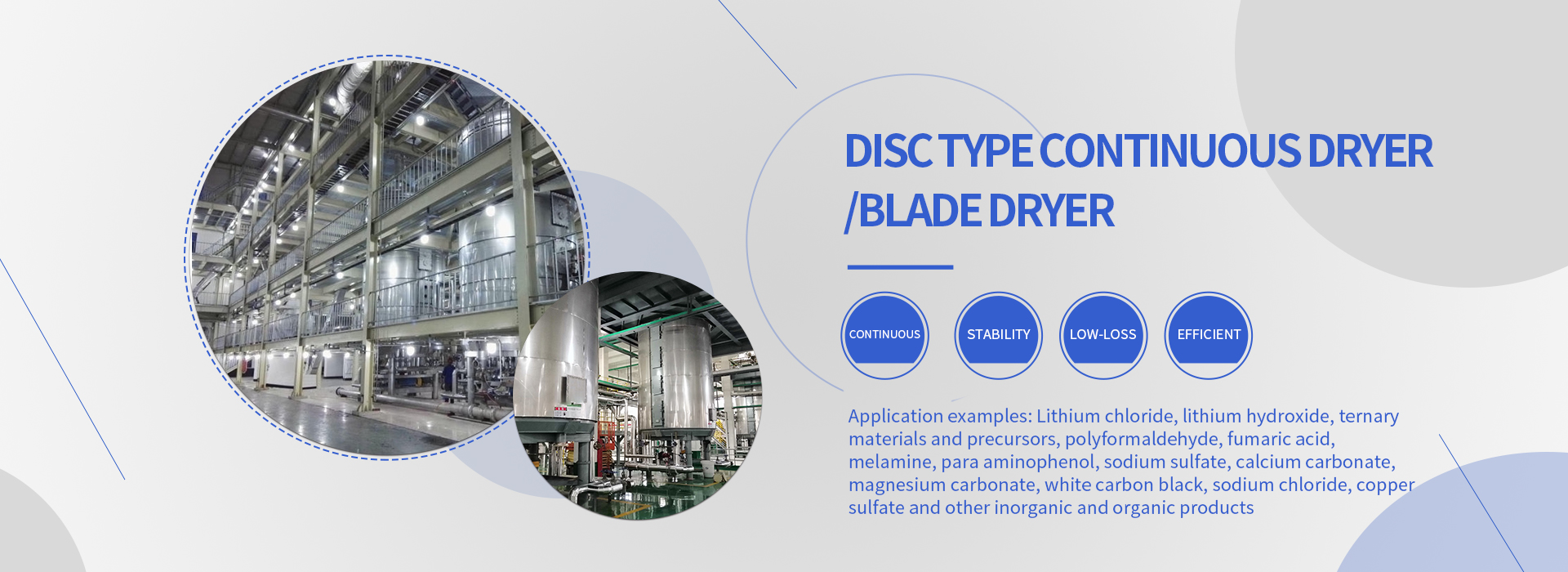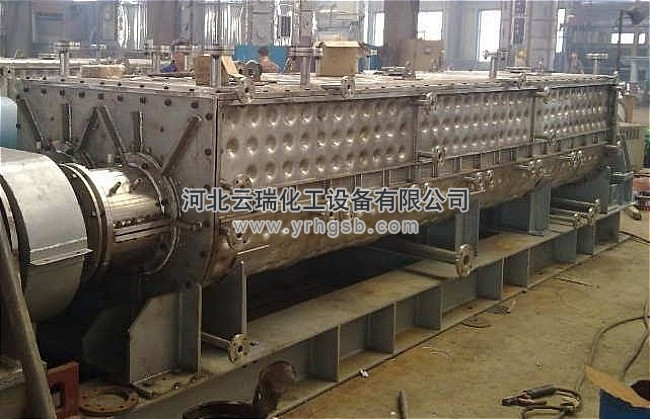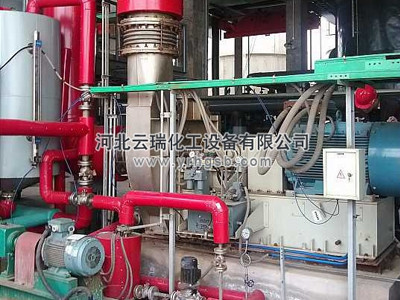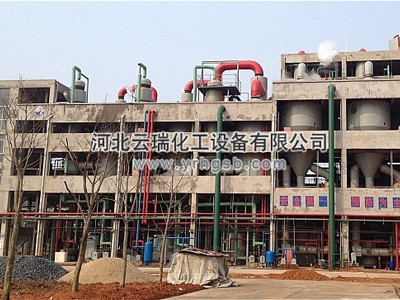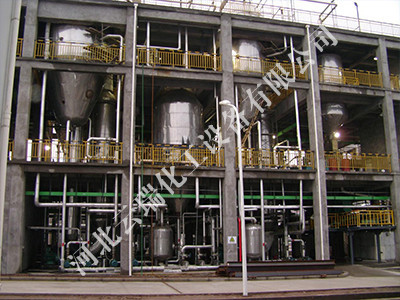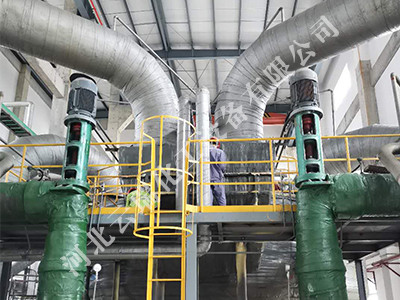Product Display
Paddle dryer is a horizontal stirring type dryer mainly based on heat conduction. It is a low-speed stirring continuous indirect heating device that uses a special fan-shaped structure of hollow blades to conduct heat and dry (cool) materials. Due to the shape of the stirring blades resembling ship paddles, it is called a propeller type dryer. It is also known as a trough dryer or stirring dryer in foreign countries. We have developed a series of products with dual axis and four axis structures and over 10 specifications
working principle
There are two parallel rotating shafts embedded with interlocking blades inside the jacket structure of this machine. Each shaft is embedded with many hollow fan-shaped blades arranged in a staggered manner at certain intervals. There are two types of blades (feed cutting surface and return cutting surface), and the shaft rotates at low speed. The heat medium enters the hollow rotary shaft and blades through the rotary joint installed at the end of the rotary shaft, and after heat transfer and drying, it is discharged outside the machine through the rotary joint.
In addition, heat medium will also be introduced into the jacket. The material is continuously supplied from the feeding port, and is locally stirred and mixed near the blade by the blade. At the same time, the heat conduction between the blade and the jacket gradually dries the material. The material is slowly discharged while heating, and the retention time can be adjusted by changing the height of the overflow weir. The raw material enters the machine from the feeding port and is transported by the hollow blade to the discharging port for discharge. During the transportation process, materials are stirred by hollow blades and heated by both the hollow blades and jacket for evaporation drying, resulting in high thermal efficiency. The machine adopts a continuously variable transmission connected to the gearbox, with a speed of 5-20 revolutions per minute, which can be adjusted according to the properties of the incoming material. The air is discharged through the exhaust port.
Performance characteristics
1. Low energy consumption: Due to indirect heating, there is no large amount of air carried away to remove heat. The outer wall of the dryer is also equipped with an insulation layer. For slurry materials, only 1.2kg of water vapor is needed to evaporate 1kg of water.
2. High thermal efficiency: The drying thermal efficiency can reach up to 80% -90%. The heat transfer coefficient K is 100-300kCal/h ·㎡·℃, and the evaporation rate is 10-30kg/h ·㎡.
3. Low system cost: Having a huge heat transfer surface within a unit effective volume shortens processing time and reduces equipment size. This greatly reduces the building area and space.
4. Wide range of material processing: using different heat media, it can handle both thermosensitive materials and materials that require high-temperature treatment. Common media include steam, thermal oil, hot water, cooling water, etc. It can operate continuously or intermittently and can be applied in many fields.
5. Low environmental pollution: does not use external air, and carries very little dust material. The solvent evaporation of the material is very small, making it easy to handle. For materials that are contaminated or require solvent recovery, closed-loop circulation can be used.
6. Low operating costs: The device operates normally, with only 1 hour/day per person. Low speed stirring and reasonable structure. The wear and tear is small, and the maintenance cost is very low.
7. Stable operation: Due to the special compression expansion stirring effect of the wedge-shaped blade, the material particles are fully in contact with the heat transfer surface. In the axial range, the temperature, humidity, and mixing gradient of the material are very small, thereby ensuring the stability of the process.
8. The drying process requires less gas and has a low flow rate, resulting in less dust being carried away by the gas. Therefore, the recovery of gas and dust after drying is convenient, and the recovery equipment is simple, saving equipment investment. For the drying process with solvent recovery, the solvent concentration in the gas can be increased, reducing the solvent recovery equipment or shortening the process.
9. Due to the special structure of the blade, the material is alternately compressed and relaxed during the drying process, which enhances the drying process. In addition, when the two blades rotate in opposite directions, they have a self-cleaning effect, so they can also be applied to viscous and paste like materials.
10. The material retention rate in the dryer is very high, and the retention time can be adjusted by the feeding rate, rotation speed, and material storage amount, and can be arbitrarily selected between a few minutes to a few hours. Therefore, it can be suitable for both easy to dry and difficult to dry materials. In addition, although there are many stirring blades in the dryer, the material basically flows in a piston flow from the feeding port to the discharging port in the dryer, with a narrow residence time distribution, resulting in uniform drying of the product.
Adapt to materials
Petrochemical industry: polyolefin powder, polycarbonate resin, high and low density polyethylene, linear low density polyethylene, polyacetal particles, nylon 6, nylon 66, nylon 12, acetate fiber, polyphenylene sulfide, propylene based resin, engineering plastics, polyvinyl chloride, polyvinyl alcohol, styrene, polypropylene, polyester, formaldehyde, styrene acrylonitrile copolymer, ethylene propylene copolymer.
Environmental protection industry: PTA sludge, electroplating wastewater sludge, boiler ash, pharmaceutical factory waste, sugar factory waste, monosodium glutamate factory waste.
Feed industry: soy sauce residue, bone based feed, distiller's grains, food scraps, apple pomace, orange peel, soybean meal, chicken bone feed, fish meal, feed additives, biological sludge
Food industry: starch, cocoa beans, corn kernels, salt, modified starch, pharmaceuticals.
Chemical industry: Soda ash, nitrogen phosphorus potassium compound fertilizer, kaolin, bentonite, white carbon black, carbon black, phosphogypsum, sodium fluoride oxide, calcium nitrate, magnesium carbonate, sodium cyanide, aluminum hydroxide, barium sulfate, calcium sulfate, calcium carbonate, dyes, molecular sieves, saponins. Alcohol residue, oxytetracycline residue, erythromycin residue, fly ash, skin powder, clay, kaolin, phosphogypsum, red gypsum, iron oxide yellow, magnesium trisilicate, alumina, H-acid, mycelium, nitroaniline, sodium cyanide, fenitrothion, indigo, ASN resin.
drying and tower.
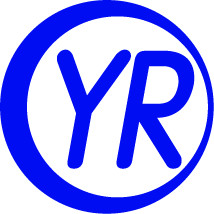
 中文(簡體)
中文(簡體) 